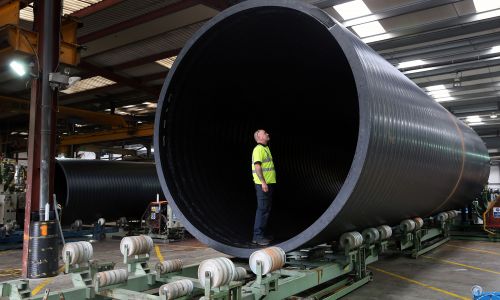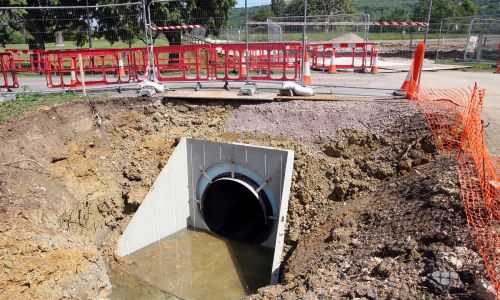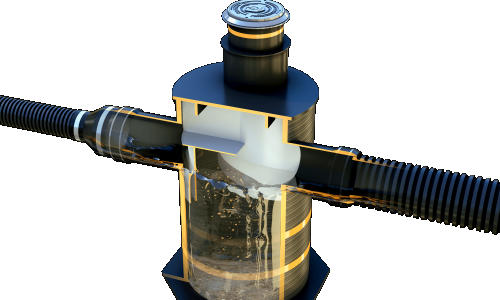2nd June 2017
The most ambitious water management projects in the world
From cities of sponge to the Dead Sea, we shine a light on some of the world’s most ambitious, innovative and awe inspiring water management projects.
China’s sponge cities China has a major problem with urban flooding, so much so that in December 2013 President Xi Jiping announced a national plan to significantly upgrade the country’s urban drainage infrastructure, with the implementation of a series of ‘sponge cities’.
Initially 16 cities were selected as pilots for China’s “sponge cities” programme, and eventually it will be rolled out nationally. But what is a sponge city? Well, essentially it’s all about SUDS (Sustainable Urban Drainage Systems), a relatively well known concept in Europe but one that is somewhat new to China, whose chaotic urban planning and vast population means that little thought has been given to water management solutions.
So instead of using principally water-resistant concrete in their cities, those involved in the development of infrastructure and construction of these pilot cities are being advised to use far more permeable materials, and factor in the inclusion of green spaces and the interconnection of rivers and streams, in order to soak up rainfall and ensure the effective run off of water away from flooded areas.
Despite being relative newcomers to the world of SUDS, the Chinese are not pulling any punches with their first foray into sustainable drainage solutions. The scale of the project is so large that it goes way beyond any similar project attempted elsewhere in the world.
The massively ambitious project is being funded by the Chinese government (15-20%), local government and the private sector. The central government is giving each city 400m yuan (£46m) a year for the first three years and in return 20% of the chosen cities must be constructed to meet sponge city standards by 2020, and 80% by 2030.
To combat this and in order to future proof one of the world’s most populous cities Thames Water has developed three major multi-billion pound engineering schemes to help prevent sewer overflows and improve water quality in the Thames. All five major sewage treatment works in London have undergone extensions and upgrades, the £635 million Lee Tunnel is already in operation, and construction is now underway on the £4bn+ Thames Tideway Tunnel, one of the most ambitious schemes of its kind in the world ever conceived.
Started last year the 16 mile long, 7.2m diameter Thames Tideway Tunnel will take seven or eight years to finish and once complete will run under London from Acton in the west to Abbey Mills in the east. It will connect 34 of the most polluting combined sewer overflows (CSOs), via transfer tunnels, and is expected to significantly reduce the number of overflow events. The tunnel will transfer the captured sewage to the Lee Tunnel for onward delivery to Beckton Sewage Treatment Works for treatment. The recycled clean water will then be released into the River Thames.
South – North Water Diversion, China In December 2014 China officially ‘launched’ one of the biggest engineering projects of all time, the South-North Water Diversion, the £48bn, 2,400km country-wide network of canals and tunnels, conceived to divert 44.8bn cubic metres of water annually from China’s humid, wet south to the parched north.
First masterminded over 50 years ago, the scheme is expected to be fully completed in 2050. Interestingly the project was first mooted by Mao Zedong, the communist revolutionary, who commented on an inspection tour in the early 50s: “The south has plenty of water, but the north is dry. If we could borrow some, that would be good.”
When finished, the work will link China’s four main rivers – the Yangtze, Yellow River, Huaihe and Haihe – and will involve the construction of three diversion routes, stretching south-to-north across the eastern, central and western parts of China’s vast landscape.
Red Sea – Dead Sea Conveyance, Jordan Often described as the cradle of human culture and civilisation the Dead Sea, and more specifically its diminishing water levels, is at the heart of a vast new $10bn water infrastructure project known as the Red Sea – Dead Sea Conveyance, which is sometimes called the Two Seas Canal.
The planned 180km pipeline will run from the coastal city of Aqaba in Jordan by the Red Sea to the Lisan area in the Dead Sea and will carry up to two billion cubic metres of seawater per year.
The project will provide sea water to stabilise the Dead Sea water level, which is shrinking at a rate of over one metre per year, as well as generating electricity to support the energy needs of the project. And vitally the pipeline will provide potable water to the wider region, with countries including Israel and the Palestinian territories all benefitting from the principally Jordanian led project.
As far back as the 19th century, British engineers and early Zionists tabled the idea of a Mediterranean-Dead Sea canal (nicknamed “Med-Dead”), and in fact the notion of connecting the two seas by a conduit or canal is nothing new. However, despite numerous planned projects over the decades nothing has ever gotten off the ground, not aided in large part by the continued instability of the Middle East. Nevertheless, following the recent agreement between Jordan and Israel for the World Bank-sponsored Red Sea – Dead Sea Conveyance, progress looks likely to finally be made.



